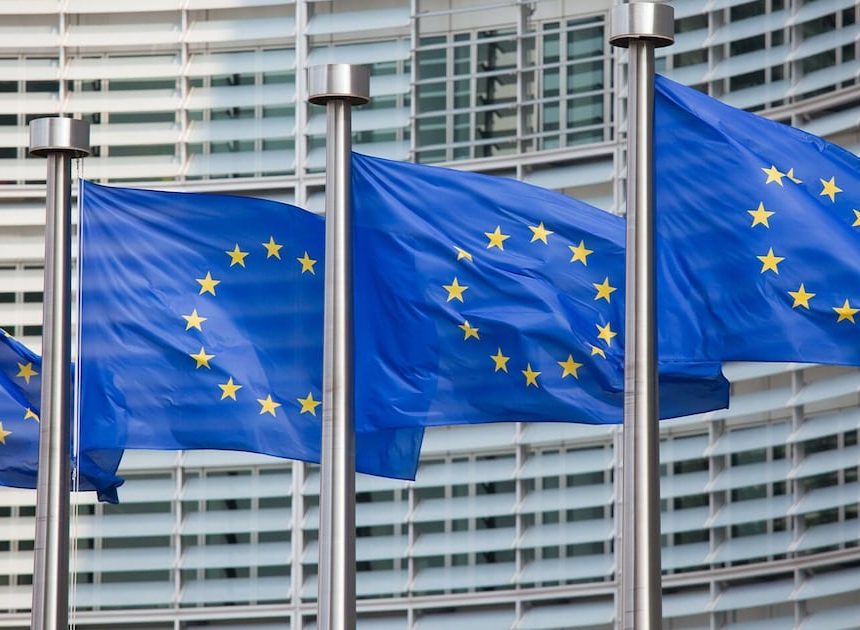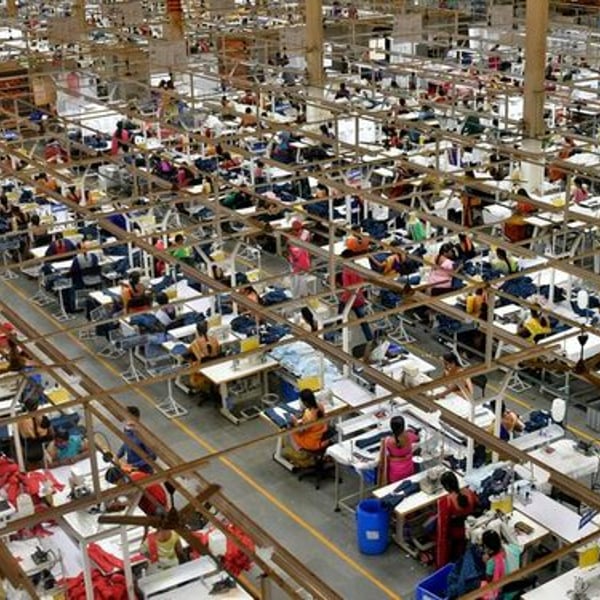Presley Oldham had been planning his fine jewellery debut for more than a year, finally ready to expand beyond the colourful pearl and beaded glass necklaces that have been his brand’s signature since its launch in 2020
But then, this spring, the price of gold started creeping up. Then climbing. Then soaring.
Unable to take on the overhead cost of solid gold, which hit an unprecedented rate of $4,000 per ounce last week, Oldham postponed his plans, opting instead to offer a make-to-order option for a limited range of items in gold, which will launch this fall.
“I didn’t want to price out the customers who have been with me since the beginning,” he said. “A simple pearl chain necklace in sterling silver or gold fill I can offer for under $1,000. In solid gold, these days it would be closer to $5,000 to $6,000.”
The recent surge in gold — and more recently, silver — prices has become a major challenge for jewellers across the spectrum, from small independent designers like Oldham to global giants such as Signet Jewelers and Pandora. As gold continues to reach record highs, brands are being squeezed by rising production costs that threaten already thin profit margins compared to handbags and ready-to-wear.
Large multinational jewellery retailers have the option to “hedge” against the risk of fluctuating commodities prices by using financial contracts called futures, which can lock in prices for yet-to-be-made upcoming purchases. If jewellers expect prices to rise, they can go long on futures, agreeing to buy the metal at a fixed rate at a later date. If they already hold large inventories and fear prices may fall, they can short futures to safeguard the value of what they own.
But smaller jewellers lack the resources for this kind of financial engineering. Labels like Oldham’s must rely on more creative solutions to mitigate the impact of higher costs of gold, such as reducing karat levels, using alternative materials and offering shoppers a transparent explanation for price increases. Many fine jewellers are now swapping gold with sterling silver, gold plating, silk cords and glass, bolstered by the expanding parameters of fine jewellery as consumers broaden their own definition of luxury.
“There is a customer base who wants to buy jewellery but is being priced out of gold,” said Ali Dickson, the designer behind Brooklyn-based fine jewellery line Ruth NY. She launched a sterling silver line in September after watching gold prices tick up.
For others, spiking gold prices doesn’t necessarily mean a reduction in demand. In fact, as the value of gold increases, the consumer perception of the value of gold jewellery increases too — a key driver of the category’s growth in the past year. Moda Operandi, for instance, is expecting its biggest year ever in jewellery sales, according to director of accessories Ryan Kleman.
“Customers are well aware gold prices are through the roof,” said Paul Zimnisky, a diamond and precious metals analyst. “It’s one of the reasons people want jewellery — it contains rare and valuable materials that appreciate over time.”
Will gold prices come down?
Gold and now silver prices are surging due to a mix of economic and geopolitical pressures that have rattled global markets. Gold has long been known as a “safe-haven” investment, a lower-risk asset than equities and bonds during times of uncertainty. Donald Trump’s introduction of tariffs this spring kicked off the rally; the ongoing US government shutdown supercharged it.

The decline of the US dollar has been another major catalyst. Because gold is priced in dollars, a weaker greenback makes the metal cheaper for foreign buyers and therefore pushes demand higher. US inflation and anticipated interest rate cuts make commodities investments even more compelling, as the buying power of currency decreases.
These factors combined first compelled a burst of central banks and institutional funds around the world to diversify into gold in the spring, but in recent months, retail investors have also flooded into the space, pushing the price of gold and silver to record-breaking highs.
In other words, it’s investment in gold futures and bullions (physical bars of gold) that pushed prices up; the amount of gold manufactured for jewellery has actually fallen dramatically this past year — about 18 percent in the first half of 2025, according to Metalsfocus, a precious metals consultancy.
Some observers believe the market is due for a correction.
“It’s getting too frothy, with a lot of market speculation and short-term investors piling in,” said Ziminsky.
For jewellers, this means now might not be a great time to load up on gold supplies, even if they fear prices will continue to increase in the short term. Just like stocks, commodities can dip in value. Between 2020 and 2022, for example, gold prices fell about 16 percent.
What alternatives are jewellers exploring?
Rather than continuing to offer the same range of gold products and significantly raising prices, many jewellers have opted to reduce the amount of gold itself.
At Moda Operandi, Kleman said he has observed a “choose your own adventure” approach to material substitutes, whether it’s downgrading from 18-karat gold to 14 karats — the most common route for fine jewellers — or adding brass or silver versions of products previously only available in gold. For example, he pointed to Juju Vera, for instance, which has products available in solid gold, sterling silver and brass.
Rocksbox, a fashion jewellery retailer owned by Signet, has seen traditional fine jewellery shoppers gravitate toward its more affordable gold vermeil offering, according to Gina Gorman, vice president of brand experience.
“We’ll see someone come into the store wearing Cartier bracelets and they’re interested in doing a mix of high and low,” said Gorman.
All the while, the definition of fine jewellery itself has shifted in recent years, which makes it easier for brands to introduce options without damaging their perception of luxury. Whereas a decade ago, the category could only contain solid gold and precious stones, consumers today are much more open to other components — not only silver but creative materials like leather cords and glass.
E-commerce jewellery retailer At Present takes a materials-agnostic approach to its product offering, which founder Marc Bridge said has helped it shield itself from rising costs of gold. The average price paid per product on the platform has hovered around $300 since its launch in 2020, he said. While what $300 could buy looks drastically different today from what it did back then, shoppers still have an appetite to buy, he added, even if it means it’s bronze and borosilicate glass over solid gold. At Present’s revenue has more than doubled in the last year.
“Leaning into creativity and variety of materials served us really well as the price of gold skyrocketed,” said Bridge. “If we were selling gold by the ounce, my business would get walloped.”
What’s the best way to increase prices?
Jewellers typically set prices not to match current gold rates, but to anticipate higher ones, avoiding the need for constant adjustments. Aiming for roughly a 50 percent profit margin, Dickson of Ruth NY last raised her prices in May, when gold was at $3,200 an ounce, building in protection for prices up to $3,800.

“I really thought it would take a while to get there,” she said. When she raised prices again earlier this month, she priced it for gold to reach $5,000 per ounce — about a 20 percent average increase.
It makes sense to keep the margins on some products lower than others for customer acquisition, Dickson added. Entry-level pieces like her $315 14-karat micro charms typically see lower price increases relative to the amount of gold.
In terms of communicating price increases, Dickson as well as Presley Oldham have found that they’ve been able to resonate with shoppers when they talk about the dizzying costs of gold in a straightforward way.
Oldham said he predominantly used email to communicate with customers, and having entry-level items, like a single pearl drop earrings that costs $100, also helps. Dickson posted multiple times on Instagram ahead of her price hikes, urging her followers to click purchase if they had anything in their carts before she implemented the changes.
“Large brands obviously don’t do this but I have direct contact with my customers, and I got messages saying thank you for letting them know,” said Dickson.
Is there value elsewhere in fine jewellery?
As gold prices skyrocket, silver has also seen an unprecedented climb. What isn’t gaining ground, however, are diamonds. Prices for both natural and lab-grown stones have fallen to record lows, reflecting waning consumer demand and a glut of supply in the market.
Fine and fashion jewellers alike are embracing diamonds in their product offerings, with the former swapping gold for natural diamonds and the latter investing in lab-grown gems. Rocksbox is expanding its lab-grown range and now offers diamond pieces for under $100, for instance. Meanwhile, Spinelli Kilcollin now offers lab-grown diamonds in addition to natural diamonds, according to Kleman of Moda Operandi.
“Jewellers are meeting the client where they are and not necessarily presenting certain pieces as a fixed option,” he said.
Ultimately, the consumer is more pragmatic than ever. This bodes well for the category, “because it holds value, it’s semiprecious, it’s not trend-driven and it’s likely something she can wear everyday,” Klemen added. “She understands that buying these pieces will retain more value than a dress or a bag.”


